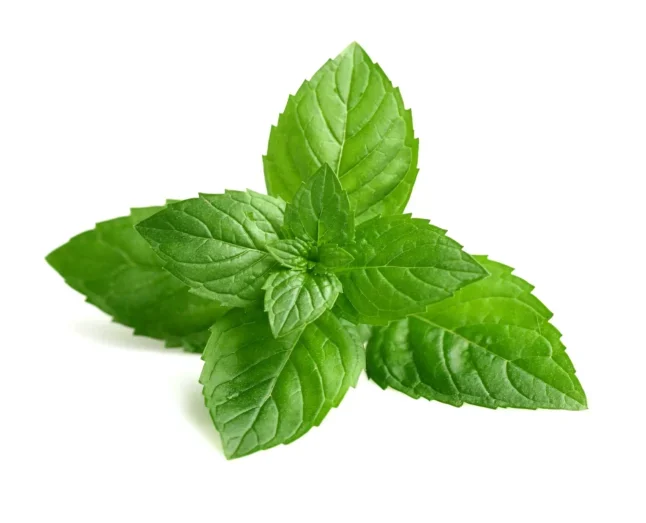Mint, whether in the form of the herb or its essential oil, has a wide range of uses due to its refreshing flavor and aroma, as well as its potential health benefits. Here are some common uses of mint:
Culinary:
Mint is commonly used in cooking and baking to add flavor to dishes. It can be used fresh, dried, or as an ingredient in sauces, salads, desserts, beverages (like mint tea or mojitos), and savory dishes (like mint chutney or mint-infused yogurt).
Digestive Aid:
Mint is often used to help alleviate digestive issues such as indigestion, gas, and bloating. Peppermint oil, in particular, has been studied for its potential to relieve symptoms of irritable bowel syndrome (IBS) and other gastrointestinal disorders.
Oral Health:
Mint’s antimicrobial properties make it a popular ingredient in oral hygiene products like toothpaste, mouthwash, and chewing gum. It can help freshen breath and inhibit the growth of bacteria in the mouth.
Aromatherapy:
The aroma of mint is invigorating and can help promote feelings of alertness, focus, and relaxation. Mint essential oil is often used in aromatherapy diffusers, massage oils, and bath products for its refreshing scent
.Skin Care:
Mint has cooling and soothing properties that make it beneficial for skin care. It can be used in homemade face masks, toners, and creams to help refresh and revitalize the skin, as well as to alleviate itching or irritation.
Insect Repellent:
Mint’s strong scent can act as a natural insect repellent. Placing fresh mint leaves around the home or using mint essential oil in a spray can help deter insects like mosquitoes, ants, and spiders.
Flavoring:
Mint is used to flavor a wide range of products, including candies, chocolates, ice cream, and alcoholic beverages.
These are just a few examples of the many uses of mint. Its versatility and pleasant flavor make it a popular ingredient in various industries, from food and beverage to health and wellness.







